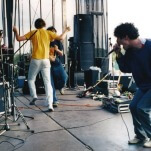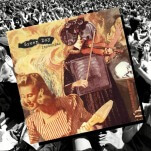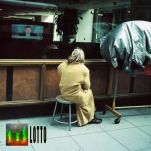Lo Nuevo: The New Wave of Spanish Winemaking
If tasting through a back-vintage vertical of Gran Reserva Riojas from a classic bodega is the vinous equivalent of reading a first edition of Cervantes’ Don Quixote, then drinking the inaugural release wines from Spanish wine producer Lo Nuevo is akin to screening six short films from modernist director Pedro Almodóvar. Though the opposing experiences are representative of a different aesthetic, sensibility and time, both encounters are unmistakably Spanish and reflective of the pride and passion of Spanish culture.
Lo Nuevo translates as ‘The New’ or ‘What’s New.’ Six wines are currently produced, two whites and four reds, together designed to celebrate the ascendance of Spanish winemaking through an exploration of its diverse and unique regions. The vineyard sources, all belonging to iconic Spanish winemaker Juan Gil, range in age from 15 to almost 150 years. “Modern wines from ancient vines” serves as both method and manifesto.
Spain has produced wine for over 3,000 years, making it one of the world’s oldest winemaking countries, but it has transformed itself almost overnight from a provincial producer of bulk wines to the most modern winemaking country in Europe.
While Spain enjoyed various boom periods from the 17th to the 19th centuries, the first part of the 20th century debilitated the Spanish wine industry. The plague of phylloxera, a plant louse, nearly wiped out all of Europe’s vineyards. The onset of World War I, The Spanish Civil War, World War II, and the military regime of Francisco Franco also dealt a series of crippling blows. Some relief came in the 1950s with the nationwide construction of large cooperative wineries. Unfortunately, this led to an industry based on the production of cheap bulk wines. When Franco died in 1975, Spain’s wine industry had little standing on the international stage. Its reputation was mainly for producing wines that were astringent, over-oaked, over-sulphured or overly oxidized.
However, a sea change occurred when the country’s economic fortunes began to turn around, spurred by a return to democracy in 1978. After joining the European Union in 1986, a flood of new investment prompted dramatic changes in the vineyards and wineries. Modern equipment and techniques traveled from region to region on a brand new network of autopistas. In the 1990s, governmental restrictions on irrigation were lifted giving producers greater control over grape growing, particularly in hotter climates. The bulk wine co-ops of the 1950s evolved into limited companies with the former co-op members as shareholders. All of this resulted in a significant leap in quality and efficiency, and garnered an international reputation now built as much on traditional classics as it is on stylish, high-scoring, state-of-the-art sensations.
-

-

-

-

-

- Curated Home Page Articles By Test Admin October 21, 2025 | 3:10pm
-

- Curated Home Page Articles By Test Admin October 21, 2025 | 2:57pm
- Urls By Test Admin October 21, 2025 | 2:57pm
- Curated Home Page Articles By Test Admin October 21, 2025 | 2:55pm
-

-

-

-

-

-

-

-

-

-

-

-

-

-

-

-

-

-

-

-

-

-

-

-

-

-

-

-

-

-




































